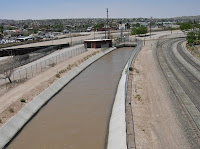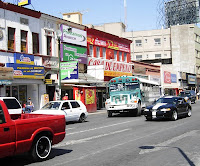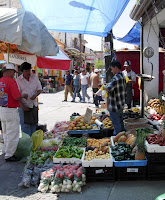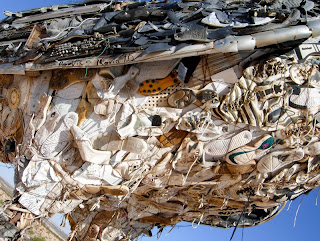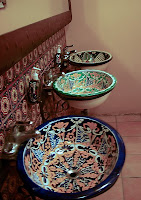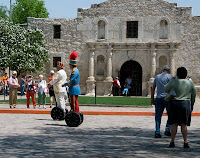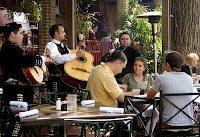 150,000 years ago, a group of peaks named Albuquerque's Volcanoes erupted for the last time. Now reduced to short cinder cones, they once produced long lava flows that eventually cooled and cracked into rocks that tumbled and rolled down the slopes of what is now a mesa. Eventually, oxidation weathered the rocks to a dark brown patina.
150,000 years ago, a group of peaks named Albuquerque's Volcanoes erupted for the last time. Now reduced to short cinder cones, they once produced long lava flows that eventually cooled and cracked into rocks that tumbled and rolled down the slopes of what is now a mesa. Eventually, oxidation weathered the rocks to a dark brown patina.
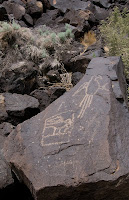 Fast forward 148,000 years, and humans now occupy this land. From 2,000 to 400 years ago, American Indians and Spanish settlers removed the layer of patina to create images, or petroglyphs, in the rocks (pictographs are similar, but are created using paint on rocks). Some are recognizable as humans, birds, or plant parts, while the meaning of others is unknown. The relative age of the petroglyphs can be determined by color and order -- the older petroglyphs are fainter and darker, as the patina has begun to reform. Newer petroglyphs may overlap older ones, creating a time line.
Fast forward 148,000 years, and humans now occupy this land. From 2,000 to 400 years ago, American Indians and Spanish settlers removed the layer of patina to create images, or petroglyphs, in the rocks (pictographs are similar, but are created using paint on rocks). Some are recognizable as humans, birds, or plant parts, while the meaning of others is unknown. The relative age of the petroglyphs can be determined by color and order -- the older petroglyphs are fainter and darker, as the patina has begun to reform. Newer petroglyphs may overlap older ones, creating a time line.
The petroglyph above shows two macaws, one free and one that appears to be in a cage. Macaws have long, plumed tail feathers, and these were commonly used in Pueblo Indian ceremonies. The photo on the left shows human figures. The fainter one on the right has been overlaid by a face in a star, possibly a mask, with a headdress and talons. One eye of this image has been recently vandalized, a federal offense.
 The trail in Petroglyph National Monument took us to the top of the mesa, where we could see the cinder cones that are the remnants of the volcanoes that created this landscape, now looking like three dimples on the horizon. There are over 20,000 petroglyphs in this area, and archaeologists are still developing methods of dating them and determining their meaning. But ponder this -- what if they are just ancient graffiti, with no more meaning than the pictures and words we try to ignore as we hurry under overpasses or pass by construction zones? It would be sad to think of a future archaeologist trying to find deep meaning in the messages our graffitti artists are leaving -- using, of course, the medium of spray paint instead of a chisel and rock.
The trail in Petroglyph National Monument took us to the top of the mesa, where we could see the cinder cones that are the remnants of the volcanoes that created this landscape, now looking like three dimples on the horizon. There are over 20,000 petroglyphs in this area, and archaeologists are still developing methods of dating them and determining their meaning. But ponder this -- what if they are just ancient graffiti, with no more meaning than the pictures and words we try to ignore as we hurry under overpasses or pass by construction zones? It would be sad to think of a future archaeologist trying to find deep meaning in the messages our graffitti artists are leaving -- using, of course, the medium of spray paint instead of a chisel and rock.


